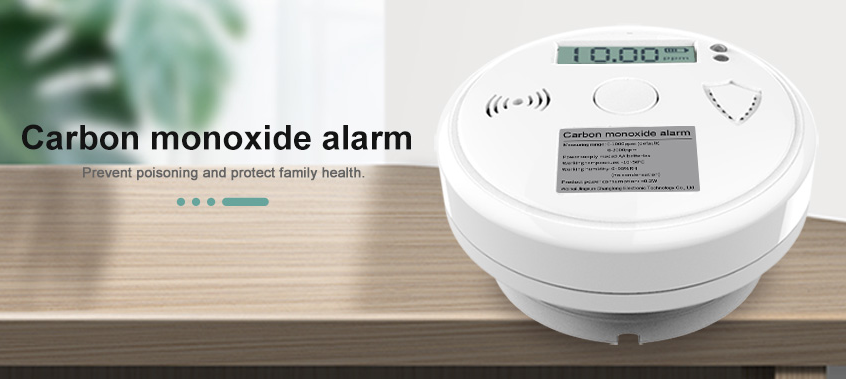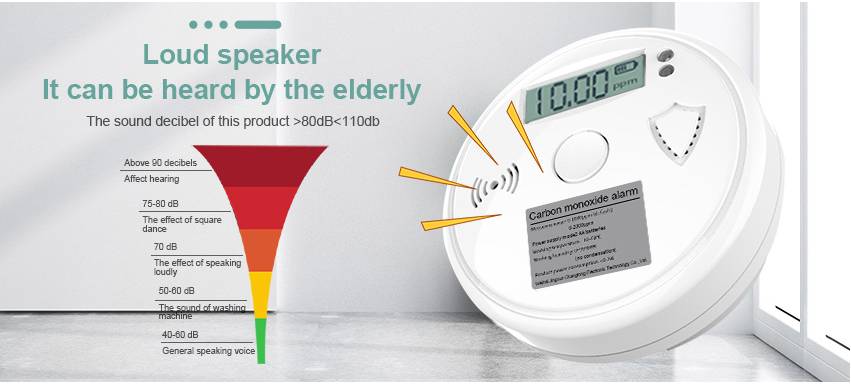Summary:
Carbon monoxide is a colorless, odorless and poisonous gas. It is a byproduct of burning carbon-based fuels. You can find carbon monoxide gas in smoke from stoves, stoves, gas stoves, kerosene heaters, car exhaust, lanterns and even portable generators. Carbon monoxide gas can cause permanent injury or death in even small concentrations in the environment, so it’s important to have a carbon monoxide detector.
Without a carbon monoxide detector, it’s almost impossible to know if you have carbon monoxide present.
Carbon monoxide is a “silent killer” because anyone can inhale it without knowing it. Symptoms of carbon monoxide poisoning include dizziness, nausea, weakness, confusion and chest pain. Symptoms can take several hours to appear and may be mild at first, but serious complications can develop several hours after exposure.
When carbon monoxide reaches unsafe levels, a carbon monoxide detector sounds an alarm, giving you a chance to leave the space and get outside. The higher the concentration, the faster the alarm will go off.
We measure carbon monoxide in the atmosphere in parts per million (PPM). Standard carbon monoxide detectors take up to an hour to sound an alarm at levels of 70 parts per million and below. Carbon monoxide detectors can respond to extremely high concentrations of more than 400ppm in four minutes.

When does carbon monoxide become dangerous and unsafe?
Carbon monoxide levels vary from source to source and space to space. A well-functioning car will produce more than 80,000 PPM of co2 after starting up, falling to around 300ppm after 15 minutes. Kitchen gas stoves cannot produce more than 800ppm of carbon monoxide, but they are often adjusted to produce less than 50ppm.
The NATIONAL Fire Agency says the average adult can experience symptoms of carbon monoxide poisoning at 50 parts per million if exposed to it for a long time. At 400ppm, headaches and nausea can occur in just an hour. At 6,400 PPM, just 15 or 20 minutes of exposure carries a serious risk of death.
But the amount of carbon monoxide is ideal. Low concentrations can become dangerous. Even if your stove produces less than 50 parts per million of carbon monoxide, carbon monoxide can build up and concentrate to dangerous levels in your kitchen if you leave it burning. The higher the CONCENTRATION of CO, the more likely it is to cause illness, injury and even death.
How does a carbon monoxide detector work?
A carbon monoxide detector is a simple device with just a few key components. A silicon microchip in a plastic case sends an electric charge to a small testing chamber with a carbon monoxide sensor. The sensor can detect and measure CO concentration in the atmosphere. If the sensor detects high levels of carbon monoxide, the microchip triggers an alarm. Carbon monoxide alarms are powered by a home or business electrical system or battery.
The CO detector can also include a power indicator, test button, and LCD screen. Model with LCD screen can display system status and CO level in alarm. The power indicator will tell you if the unit is working or if the battery needs to be replaced.
Some models may also emit a chirp to indicate a low battery. The Test button allows you to test the functionality. Make sure you test your carbon monoxide detector at least once a month and replace the battery if needed, or completely.
Place carbon monoxide detectors at least 5 feet off the ground and away from fireplaces and other devices that can create flames.
Carbon monoxide is lighter than air, meaning it rises above the ground. Therefore, you should place the detector on a wall 5 feet from the floor or ceiling. Do not place the detector near a fireplace or any device that produces a flame, or you will get the wrong reading. Keep detectors away from pedestrians, especially pets and children.
To ensure the safety of you and your family, check your carbon monoxide detector regularly. Follow the instructions that came with the detector. Always replace the battery if necessary. Most carbon monoxide detectors last five to seven years before being replaced.

If a carbon monoxide alarm goes off, go outside to see if you or someone else has symptoms.
If the carbon monoxide alarm goes off, go outside for fresh air immediately.
Once outside, there are steps you can take to deal with carbon monoxide alarms:
Contact the emergency services.
Determine if you or someone else has symptoms of CO poisoning. See the CDC’s web page on carbon monoxide poisoning for more information.
Do not re-enter the home until emergency services confirm it is safe to do so.
Contact a professional to inspect fuel burning equipment such as heating systems, vents, stoves, gas ranges and chimneys. Finding the source of carbon dioxide and fixing it is crucial.
Check vents and chimneys regularly for improper connections and for obvious rust and stains.
Carbon monoxide is dangerous. Exposure can result in CO poisoning and a range of symptoms. Without a CO detector, you may never know you have a problem. The good news is that, in California and twenty-five other states, single-family homes are required by law to have at least one CO gas detector.
When was the last time you inspected your CO detector? If you have any questions or need a CO detector in your home or business, contact us!